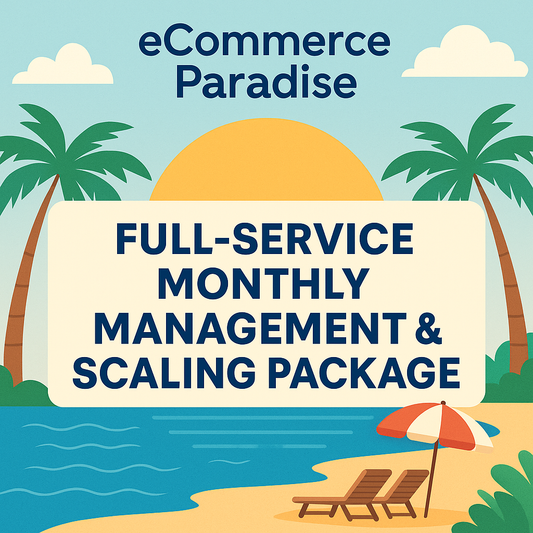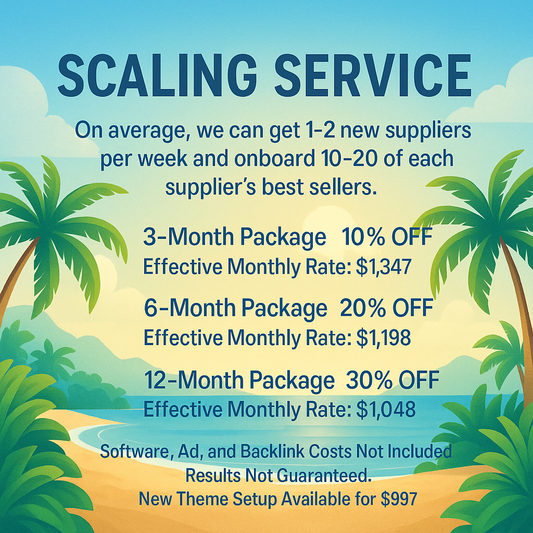
Master Your Ecommerce SEO: Audit Your Site Today!
Hello, ecommerce enthusiasts! Trevor Fenner here, founder of Ecommerce Paradise. If you’re serious about scaling your online store and reaching a wider audience, you need to talk about SEO. Performing a thorough SEO audit for your ecommerce site isn’t just a best practice; it’s essential for improving your visibility, driving traffic, and ultimately increasing conversions. Let’s dive into how you can perform an effective SEO audit that will have your online shop thriving!
Understanding the Importance of an SEO Audit
An SEO audit is a comprehensive analysis of your website’s health concerning search engine optimization. Think of it as a regular check-up for your ecommerce site. Just as you’d want your physical health to be optimal, you want your website to be in tip-top shape for both users and search engines like Google. This leads to better rankings, enhanced user experience, and improved conversion rates.
Getting Started With Your Ecommerce SEO Audit
Your SEO audit will cover several critical areas that contribute to overall site performance. Here’s a straightforward approach that you can follow:
1. Website Structure Analysis
The structure of your website impacts both user experience and SEO. A well-organized site helps search engines crawl your pages efficiently. Here are some crucial elements to assess:
- URL Structure: Ensure your URLs are clean, descriptive, and keyword-rich. This not only helps search engines but also gives users an idea of what to expect.
- Navigation: Make sure that your site has a clear and logical navigation structure. Users should easily find their way around your online store.
- XML Sitemap: An updated sitemap is important for search engines to understand your content better and index it faster.
2. Content Quality Review
Content is the backbone of any successful ecommerce SEO strategy. Your site’s content must be engaging, informative, and relevant. Here are some pointers:
- Keyword Optimization: Ensure that the right keywords for your niche are naturally integrated into your product descriptions, blog posts, and other content.
- Unique Descriptions: Avoid duplicating manufacturer descriptions. Instead, create unique content that highlights the benefits of your products.
- Rich Media: Images and videos can enhance user experience. Don’t forget to optimize them for quick loading and include SEO-friendly alt texts.
3. On-Page SEO Elements
On-page SEO refers to the optimization of individual pages on your site. This includes:
- Title Tags and Meta Descriptions: These elements help both search engines and users understand the content of the page. Make sure they’re descriptive and include relevant keywords.
- Header Tags: Use header tags (H1, H2, H3) appropriately to break up content and incorporate keywords.
- Internal Linking: Link relevant pages within your content to help users navigate your site and stay engaged longer.
4. Technical SEO Examination
Technical SEO focuses on the backend of your site and how it interacts with search engines. Key aspects to check include:
- Site Speed: A slow-loading site can significantly affect your rankings and conversion rates. Use tools like Google PageSpeed Insights to assess and improve your site speed.
- Mobile Friendliness: Ensure your ecommerce site is responsive and provides a seamless shopping experience on mobile devices, as many users now shop via their phones.
- SSL Certificate: Security is a top priority for users. Make sure your ecommerce site has an SSL certificate to protect your customers’ data.
Boosting Your Visibility with Google Shopping Ads
Besides organic strategies, Google Shopping Ads can be a powerful tool for driving traffic to your ecommerce site. Incorporating Google Shopping Ads into your marketing strategy can significantly boost your visibility, especially when paired with a robust SEO plan. Here are some tips for using Google Shopping Ads effectively:
- Product Feed Optimization: Your product feed must be optimized for it to perform well on Google Shopping. Include accurate titles, descriptions, and images.
- Categorization: Ensure your products are categorized correctly within Google Merchant Center to appear in relevant searches.
- Ad Budget Allocation: Determine a budget that aligns with your goals, and continuously monitor performance to adjust accordingly.
Integrating Email Marketing Into Your SEO Strategy
Email marketing and SEO can work hand-in-hand to drive your ecommerce business’s success. As you're performing your audit, consider how integrating email marketing strategies can enhance user engagement and retention:
- Content Personalization: Use data from SEO audits to create email content tailored to different segments of your audience, ultimately driving more traffic back to your site.
- Promoting Content: Share blog posts and other valuable content via email to attract visitors who are interested in your offerings.
- Transaction Emails: Don’t miss out on the opportunity to include links to other products within transaction-triggered emails.
The Final Steps: Monitoring and Adjusting Your Strategy
After conducting your SEO audit, it’s crucial to monitor your efforts continuously. SEO is not a one-time task—it’s an ongoing process. Here are some final tips to maintain your momentum:
- Use Analytics: Monitor website traffic, conversion rates, and rankings with tools like Google Analytics and Google Search Console.
- Conduct Regular Audits: Schedule audits at least twice a year to stay updated with any changes in SEO best practices or Google algorithms.
- Keep Learning: Join communities, read blogs, and attend webinars to understand the evolving landscape of SEO and ecommerce.
Unlock the Potential of Your Ecommerce Site!
Your ecommerce site can absolutely thrive with a solid SEO foundation. Remember, performing a comprehensive SEO audit may seem daunting, but with a structured approach, you can break it down into manageable steps. By focusing on website structure, content quality, technical elements, and integrating marketing strategies, you will set your online store on the path to success. Now, take a deep breath and get started today—you have all the tools you need to unlock the potential of your ecommerce site!


















